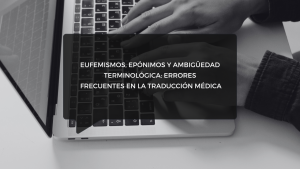Christmas time is seen by many of us as a time for renewing hope and making wishes. As the world embraces the festive spirit and looks forward to the promise of a new year, the translation industry, too, harbors its own set of aspirations and desires. Amid the twinkle of holiday lights and the warmth of gatherings, there’s a collective hope for a more seamless, efficient, and intelligent translation process. What do I wish for? It´s simple… A comprehensive solution for translation professionals and organizations seeking to streamline their translation processes and deliver impeccable multilingual content. My comprehensive wish list outlines the key features and functionalities that I believe a unified platform should gather for all my translation/localization/content creation requests.
This wish list is designed to inspire and guide software developers out there in creating a state-of-the-art translation platform that combines the power of Artificial Intelligence (AI), glossary integration, CAT tools, MT, seamless Quality Assurance (QA) and format checks, all within a single, user-friendly interface. Whether you’re a freelance translator, a language service provider, or a global enterprise, this platform should aim to transform the way we handle translation projects, saving time, ensuring consistency, and delivering the highest quality translations under the close supervision and execution of expert language professionals.
Let’s dive into the details of my wish list, highlighting the essential features that will make this platform a game-changer in my daily practice.
Advanced Neural Machine Translation (NMT): The core of your platform should include state-of-the-art NMT models for accurate and context-aware translations in multiple languages.
Glossary Integration: Enable users to easily upload and manage glossaries specific to their industry or project, ensuring consistency in terminology.
Glossary Aware Engine: MT output includes glossary preferred terms without human editing.
Translation Memory: Implement a robust translation memory system to store and retrieve previously translated segments, improving efficiency and maintaining consistency.
Real-time Collaboration: Allow multiple users to work on translations simultaneously, with real-time updates and commenting features for efficient collaboration.
Quality Assurance Tools: Incorporate automated QA checks, including grammar and spelling, to help translators produce high-quality work.
Format Checking: Ensure within the platform that translated content retains the original formatting, whether it’s for documents, websites, or other media types.
Customizable Workflows: Provide flexible project management and workflow customization options to accommodate different translation needs and processes.
Version Control: Maintain a version history of translations for easy tracking of changes and rollbacks if necessary.
AI-Powered Suggestions: Utilize AI to suggest alternative translations, improve accuracy, and enhance productivity.
AI Prompting: Make final adjustments to text, such as changing tone from formal to informal, and being able to keep both versions – pre and post adjustments.
Terminology Consistency: Implement features that automatically detect and correct inconsistent terminology throughout the translation.
CAT (Computer-Assisted Translation) Tools: Offer features like segmentation units, fuzzy matching, and automatic pre-translation for increased productivity.
Multiple File Format Support: Ensure compatibility with a wide range of file formats, including common office documents, website content, and software localization files.
Scalability: Design the platform to handle large-scale translation projects and accommodate growing translation teams.
Security and Privacy: Prioritize data security and compliance with privacy regulations, especially if handling sensitive content.
APIs and Integration: Provide APIs and integration options with other popular translation management systems, content management systems, or project management tools.
Analytics and Reporting: Enable users to track project progress, monitor translator performance, and generate reports for data-driven decision-making.
User-Friendly Interface: Ensure an intuitive and user-friendly interface for both translators and project managers.
Branding Terminology Bank: Allow creation for DNT and brand names or service marks to be easily recognized by MT engine.
Training and Support: Offer training resources, documentation, and customer support to assist users in getting the most out of the platform.
Continuous Improvement: Commit to regular updates and enhancements to stay ahead in the rapidly evolving field of AI and translation technology.
Cost-Effective Pricing Model: Consider a pricing model that aligns with the needs of both individual freelancers and large enterprises.
Machine Learning Feedback Loop: Implement a feedback loop where user corrections and improvements can be used to continuously train and improve the AI translation models, including both user feedback and usability testing.
Time-Efficiency: Incorporate these features in a comprehensive and user-friendly translation platform in a time-effective manner to greatly enhance the productivity and quality of translation work.
I know there are many solutions in the market that offer a bunch of them, but I still do not find anything that encompasses all of them as depicted and there is no one that enables me, the language professional, gear all the process based on my linguistic and contextual knowledge and expertise.
Wish sent, now let’s make it happen!




